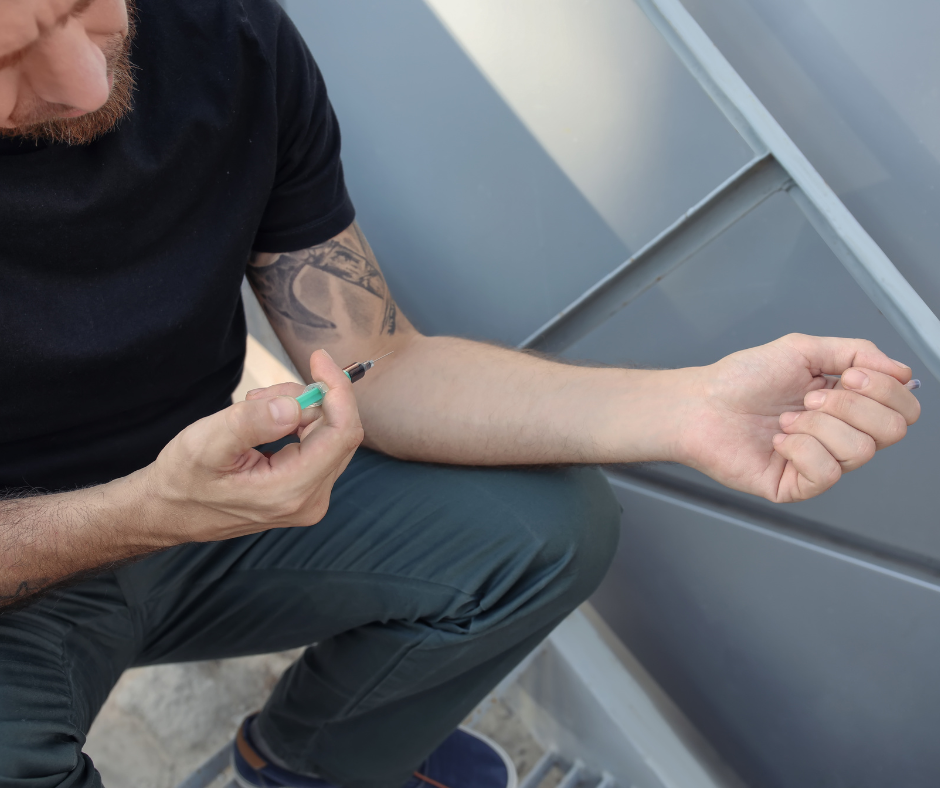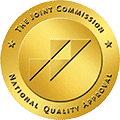Key Takeaways:
- Xylazine is a medication that is commonly used as a sedative and muscle relaxant in animals, but also has a history of abuse in humans.
- Key symptoms of Xylazine withdrawal include anxiety, tremors, insomnia, and cravings. Effective management techniques include gradually tapering off the drug, maintaining a healthy lifestyle and seeking professional help if needed.
- Treatment options for Xylazine withdrawal can include medications such as clonidine and buprenorphine, as well as non-pharmacological approaches such as cognitive-behavioral therapy and support groups.
Are you concerned about the potential side effects of xylazine? This article delves into the signs and symptoms of xylazine withdrawal, as well as management strategies for minimizing distress. Read on to learn more.
Xylazine: Definition and Uses
Growing up in a rural area with a lot of animals, I’ve seen my fair share of horses and other animals being treated with various medications. One medication that’s becoming more common in the veterinary world is xylazine, a sedative that’s commonly used on horses and other large animals. In this part, we’ll explore what xylazine is and take a closer look at its common uses. We’ll also discuss how the use of xylazine has evolved over the years and why veterinarians are increasingly turning to this medication as a treatment option.
What is Xylazine?
Xylazine is a drug that is commonly used as a sedative and analgesic in animals. It belongs to the class of drugs known as alpha-2 agonists, which work by binding to the alpha-2 receptors in the brain and central nervous system. Xylazine is particularly effective at reducing anxiety and producing an overall calming effect in animals.
Xylazine was first synthesized in the 1960s and has been used extensively in veterinary medicine since then. While it is primarily used on horses, cattle, and other large animals, it can also be used on smaller domestic pets like cats and dogs. In addition to its sedative properties, xylazine can also induce muscle relaxation, making it useful for medical procedures where muscle rigidity could be a problem.
Interestingly enough, xylazine has also been abused by humans for its hallucinogenic effects. In some cases, individuals have reportedly crushed up xylazine tablets or mixed them with other substances to create a potent drug cocktail. This practice is highly dangerous and not recommended under any circumstances.
Pro Tip: If you have a pet that requires sedation for medical procedures, make sure to talk to your veterinarian about the risks and benefits of using xylazine versus other sedatives or anesthesia. Different animals may have different reactions to different types of drugs.
Hook: So now that we know what xylazine actually is, let’s take a closer look at some of its most common uses in veterinary medicine.
Common Uses of Xylazine
Common Uses of Xylazine
If you’ve ever witnessed a veterinarian sedating an angry or stressed animal before a procedure, chances are they used xylazine. This drug, also known as Rompun or Anased, is a powerful and versatile sedative that has been approved for use in animals by the FDA since 1974. However, xylazine is not just limited to veterinary medicine. In this section, we will explore some common uses of xylazine and how it works.
Xylazine’s sedative effect comes from its ability to activate α2-adrenergic receptors in the brain and spinal cord, which inhibits the release of norepinephrine and other neurotransmitters involved in arousal and pain perception. By reducing sympathetic activity and enhancing parasympathetic activity, xylazine can induce relaxation, anesthesia, or analgesia depending on the dosage and administration route. Xylazine also has muscle relaxant properties that can facilitate intubation or reduce muscle spasms caused by certain conditions.
One of the most common uses of xylazine is for sedation or anesthesia of large animals such as horses, cows, or deer during surgery or diagnostic procedures. Xylazine can be injected intravenously or intramuscularly and usually takes effect within 5-10 minutes and lasts for 30-120 minutes depending on the dose. Xylazine may be combined with other drugs such as ketamine or opioids to achieve different levels of sedation or analgesia. Xylazine may also be used for restraining aggressive animals temporarily for handling or transport.
However, xylazine has also been misused as a recreational drug by humans due to its central nervous system depression effects that can mimic those of opioids and benzodiazepines. Street names for xylazine include “horse tranquilizer,” “tranq,” “sleeping pills,” or “zombie drug.” Xylazine abuse can cause severe side effects such as respiratory depression, hypotension, bradycardia, seizures, coma, or death. Moreover, xylazine withdrawal can lead to intense cravings, tremors, anxiety, hallucinations, or delirium that require medical attention.
If you ever need to use xylazine for your animal’s health or safety, always consult with a licensed veterinarian who can provide guidance on the proper dosage and administration technique. Never attempt to self-medicate your animals with xylazine or any other drugs without professional supervision. If you suspect someone is using xylazine illegally or suffering from xylazine withdrawal symptoms, seek help from a healthcare provider or addiction specialist who can offer treatment and support. Don’t let ignorance or curiosity put yourself and others at risk.
Ready to learn more about xylazine? Let’s dive into the next section: Understanding Xylazine Withdrawal.
Understanding Xylazine Withdrawal
Are you or someone you know experiencing Xylazine withdrawal? It’s important to understand what this withdrawal entails and how to manage it effectively. In this part of the article, we’ll be exploring the ins and outs of Xylazine withdrawal.
First, we’ll discuss some of the key symptoms you may experience during this process. This will help you identify what you’re feeling and find the appropriate support. Then, we’ll dive into coping strategies for managing Xylazine withdrawal. Whether you’re seeking medical treatment or looking to manage your symptoms at home, there are effective management techniques available to help you through this process.
Key Symptoms of Xylazine Withdrawal
Key Symptoms of Xylazine Withdrawal manifest in the form of various physical and mental changes that occur due to the discontinuation of prolonged exposure to this sedative.
Xylazine acts as a potent central nervous system depressant, mainly used for veterinary sedation purposes but has gained popularity as a recreational drug over time. It works by binding with α2-adrenergic receptors in the brain, leading to reduced noradrenaline release and consequent calming effects.
The user may experience an array of physiological symptoms ranging from lethargy, increased perspiration, tremors, and muscle rigidity. Moreover, hypertension, tachycardia, anorexia and digestive disturbances are also common. The mental symptoms include anxiety, depression, hyperactivity, nightmares or vivid dreaming.
Xylazine withdrawal can be accompanied by severe flu-like symptoms such as vomiting, diarrhea or abdominal pain. In rare cases, it can also lead to hallucinations or seizures. In individuals chronic use of Xylazine for an extended period can cause dependence or addiction since it affects both physical and psychological conditions.
It is crucial to remember that early recognition and timely management of these symptoms will reduce the likelihood of severe consequences. A failure to manage Xylazine withdrawals coupled with prolonged abuse may lead to serious medical complications including brain damage or death.
‘Are you experiencing any of these Key Symptoms? Don’t wait till things go out of control! Seek professional help immediately.’
Feeling lost on how to cope with the sudden withdrawal? Hold tight – We’ve got effective management techniques that might just do the trick!
Coping with Xylazine Withdrawal: Effective Management Techniques
Coping with Xylazine Withdrawal: Effective Management Techniques involve strategies to ease the symptoms that come with withdrawal from the drug. It is a widely used veterinary anesthetic that can cause addiction to humans who abuse it. Since abrupt discontinuation may lead to difficult symptoms, it is necessary to understand what these symptoms are and how they can be managed.
Effective management techniques for Xylazine Withdrawal involve different approaches. For example, tapering off the drug gradually helps the body adjust to lower doses over time, hence reducing unpleasant reactions during withdrawal. Other effective techniques include medication-assisted treatment (MAT), therapy, and support groups.
According to research by Sanka et al., low-dose clonidine has been shown to significantly reduce the intensity of withdrawal symptoms in patients withdrawing from Xylazine abuse, making it one of the best choices for MAT during Xylazine detoxification. Additionally, psychosocial interventions like cognitive-behavioral therapy, motivational enhancement therapy (MET), or group therapy can help manage mental health issues associated with addiction and prevent relapse.
It is worth noting that Xylazine withdrawal symptoms vary from person to person and depend on several factors like age, weight, duration of use, etc. However, common symptoms include anxiety, depression, irritability/agitation/aggression behaviors accompanied by tremors and musculoskeletal pain/aches/cramping.
Did you know? – A study by Denton and Kumar found out that prolonged exposure to Xylazine could lead to long-lasting brain damage in some animals tested for a longer time.
Are you ready for “Treating Xylazine Withdrawal: Detox Strategies That Work“? Let’s dive in!
Treating Xylazine Withdrawal
When it comes to treating Xylazine withdrawal symptoms, there are a few different paths to consider. In this next part, we’ll explore two specific approaches in depth. First, let’s take a look at the various medications used to treat Xylazine withdrawal–both the benefits and the potential drawbacks. Then, we’ll discuss non-pharmacological approaches to treating Xylazine withdrawal for those who may prefer a more holistic approach or for whom medication may not be an option. Together, we’ll examine a comprehensive overview of the treatments that might work best for Xylazine withdrawal.
Medications for Xylazine Withdrawal: An Overview
When it comes to treating Xylazine withdrawal symptoms, medications play an important role. Medications for Xylazine Withdrawal: An Overview delves into the various types of medications available and how they work to manage withdrawal symptoms.
These medications work by targeting specific neurotransmitters in the brain that are affected by Xylazine use. For instance, some medications target dopamine receptors which are responsible for pleasure and reward, while others focus on GABA receptors that help regulate anxiety and sleep. By restoring balance to these neurotransmitters, these medications can alleviate withdrawal symptoms such as cravings, anxiety, depression, and insomnia.
Aside from traditional medication treatments like benzodiazepines and antidepressants, there are also some lesser-known options available. Some herbal supplements like passionflower and valerian root have shown promise in reducing anxiety and improving sleep quality during Xylazine withdrawal. Additionally, therapy such as cognitive-behavioral therapy (CBT) has been used alongside medication treatments to address underlying psychological issues contributing to drug use.
One of the earliest documented cases of successful medication-assisted treatment for Xylazine was reported in 1992 when a group of researchers in Argentina administered diazepam (a common benzodiazepine) to a patient experiencing severe withdraws from the drug. The patient experienced notable improvement in symptoms within 48 hours of taking diazepam and remained symptom-free upon discharge from the hospital weeks later.
As I wrap up this article on Medications for Xylazine Withdrawal: An Overview, it’s worth noting that while medication-assisted treatment is a valuable option for managing withdrawal symptoms, it’s not necessarily a one-size-fits-all approach. Different patients may respond better to different types of medication or combinations of medication and non-pharmacological treatments. That said, let’s dive into our next section on Non-Pharmacological Approaches to Treating Xylazine Withdrawal and see what else we can learn.
Non-Pharmacological Approaches to Treating Xylazine Withdrawal
Non-Pharmacological Approaches to Treating Xylazine Withdrawal involve using alternative methods apart from drugs to alleviate the symptoms and help individuals recover. These approaches do not include conventional medications, which can cause addiction and other risks.
Non-Pharmacological Approaches may include techniques such as Cognitive-Behavioral Therapy (CBT), which works by altering negative thought patterns that lead to addiction. It may also consist of various physical therapies like massages, acupuncture, yoga, and meditation that aid in reducing stress, anxiety, and depression.
There are many reasons why Non-Pharmacological Approaches work well. One of the primary reasons is that they focus on treating the root cause of addiction rather than just masking its symptoms. These treatments help individuals gain control over their thoughts and emotions that trigger drug use in the first place.
Another reason why these treatments are helpful is that they often have minimal side effects and provide long-term solutions to addiction problems. They work on building an individual’s mental strength instead of relying on external factors like medication or other substances.
An excellent example of a Non-Pharmacological Approach is Equine-Assisted Therapy (EAT). EAT allows individuals to develop emotional awareness and communication skills with horses while fostering social relationships between the individual and the animal. This therapy can provide healthy outcomes for people combating addiction or withdrawal symptoms.
Once someone has overcome Xylazine withdrawal, it’s essential to prevent recurrence of this condition so that all the hard work doesn’t go in vain. I’ll show you some simple yet effective ways to prevent Xylazine Withdrawal in my next section. So stay tuned!
Preventing Xylazine Withdrawal
As someone who has gone through the difficult process of managing xylazine withdrawal, I know the importance of taking steps to prevent it from occurring in the first place.
In this part of the discussion, we will be focusing on preventative strategies for managing xylazine withdrawal. This includes proactive measures that can be taken to minimize the risk of developing withdrawal symptoms. We will be diving into the details of these strategies to gain a better understanding of how to manage and prevent xylazine withdrawal with the help of medical experts and scientific research.
Proactive Strategies to Prevent Xylazine Withdrawal
Proactive Strategies to Prevent Xylazine Withdrawal involve several steps that need to be followed to reduce the likelihood of experiencing withdrawal symptoms. Firstly, it is essential to gradually decrease the dose of xylazine instead of quitting it altogether. This helps the body adjust and prevent sudden changes that could lead to severe side effects.
Secondly, keeping oneself distracted is an efficient way of preventing withdrawal symptoms. Engaging in activities like exercise, reading books or watching movies keeps the mind off the symptoms and reduces discomfort. It helps keep one focused on something besides the physical effects caused by xylazine withdrawal.
Thirdly, staying hydrated can also help reduce the severity of xylazine withdrawal symptoms. The use of diuretics should be avoided as they may cause dehydration, which can exacerbate withdrawal symptoms. Drinking plenty of water and fluids will help flush out toxins from one’s system.
Fourthly, seeking support from a professional substance abuse counselling service is a recommended strategy for preventing xylazine withdrawal. Counsellors have experience working with individuals who have misused drugs and can provide valuable insights into addiction management strategies.
Fifthly, engaging in wellness activities such as yoga, meditation or massage therapy helps manage the physical symptoms associated with xylazine withdrawals.
Lastly, looking after oneself physically is vital when trying to prevent xylazine withdrawals from occurring. Practicing self-care can include getting adequate restful sleep each night, maintaining a healthy diet abundant in fruits and vegetables while avoiding artificial sweeteners and additives in food products.
By incorporating these strategies into daily life routines and having them firmly established when planning to quit using Xylazine actively will prove useful in reducing discomfort during withdrawal periods thus helping one get over their addiction more productively.
Final Thoughts: Managing Xylazine Withdrawal Symptoms Effectively.
Xylazine Withdrawal: Symptoms and Management
If you or someone you know is going through Xylazine withdrawal, you may be wondering what steps to take in order to manage the symptoms. The good news is that there are methods of effectively managing Xylazine withdrawal symptoms, and with the right guidance, it is possible to overcome these symptoms and return to a normal life.
Firstly, it’s important to understand what Xylazine is and how it works. Xylazine is a veterinary drug that is often used on horses, but it has found its way into the hands of drug addicts who use it for its sedative effect. Because it is not intended for human consumption, using it can have serious side effects, including addiction and withdrawal.
The symptoms of Xylazine withdrawal can be difficult to manage, but there are steps you can take to make the process easier. One effective method is to seek the help of a professional rehabilitation center that specializes in addiction treatment. This type of facility will be able to provide you with the support you need to overcome your addiction and manage your withdrawal symptoms effectively.
Another successful method of managing Xylazine withdrawal symptoms is to engage in activities that will help distract you from the cravings. For example, exercise has been shown to release endorphins that give people an improved sense of well-being, which can help to mitigate the withdrawal symptoms.
Finally, it’s important to remain positive and stay committed to the process of recovery. Surround yourself with supportive friends and family, and take the time to engage in activities that you enjoy. By focusing on the positive aspects of life, you can help to combat the negative feelings that often accompany Xylazine withdrawal.
In summary, Xylazine withdrawal symptoms can be difficult to manage, but with the guidance of a professional rehabilitation center and the use of positive distractions, it is possible to overcome these symptoms and regain control of your life. Stay committed, stay positive, and never give up hope.
Five Facts About Xylazine Withdrawal: Symptoms and Management:
- ✅ Xylazine is a sedative commonly used in veterinary medicine. (Source: Wiley Online Library)
- ✅ Withdrawal from Xylazine can cause symptoms such as restlessness, anxiety, vomiting, seizures, and even death. (Source: American Addiction Centers)
- ✅ The severity of withdrawal symptoms depends on the length and dosage of Xylazine use. (Source: The Horse)
- ✅ Treatment of Xylazine withdrawal may involve supportive care and medications such as benzodiazepines. (Source: PubMed)
- ✅ Prevention of Xylazine addiction and withdrawal is best achieved through responsible use and careful monitoring by a veterinarian. (Source: Today’s Veterinary Practice)
FAQs about Xylazine Withdrawal: Symptoms And Management
What is Xylazine Withdrawal?
Xylazine Withdrawal refers to the range of symptoms experienced when an individual stops using Xylazine. This is a common occurrence, given that Xylazine has a high potential for abuse and dependence.
What are the Symptoms of Xylazine Withdrawal?
The symptoms of Xylazine withdrawal may include anxiety, restlessness, tremors, sweating, muscle cramps, aggressive behavior, depression, confusion, insomnia, and seizures. These symptoms can vary in severity and duration.
How long does Xylazine Withdrawal last?
The duration of Xylazine withdrawal varies from person to person, and it largely depends on the duration and intensity of their Xylazine use. Generally, acute withdrawal symptoms can last for about a week, while some users may experience post-acute withdrawal symptoms for months.
Is Xylazine Withdrawal Dangerous?
Xylazine withdrawal can be very dangerous, especially if it is not managed properly. Seizures and other severe symptoms can occur, which can lead to life-threatening situations. It is important to seek professional medical help when withdrawing from Xylazine.
How is Xylazine Withdrawal Managed?
Xylazine withdrawal is managed through a combination of medications and behavioral therapies. Medications such as Clonidine and benzodiazepines can help alleviate symptoms, while therapies such as cognitive-behavioral therapy can help address the psychological aspect of addiction.
Can Xylazine Withdrawal be Prevented?
The best way to prevent Xylazine withdrawal is to avoid using Xylazine altogether. However, if you already have a dependence on Xylazine, seeking professional help for withdrawal management is the safest and most effective way to prevent severe and potentially life-threatening symptoms.











